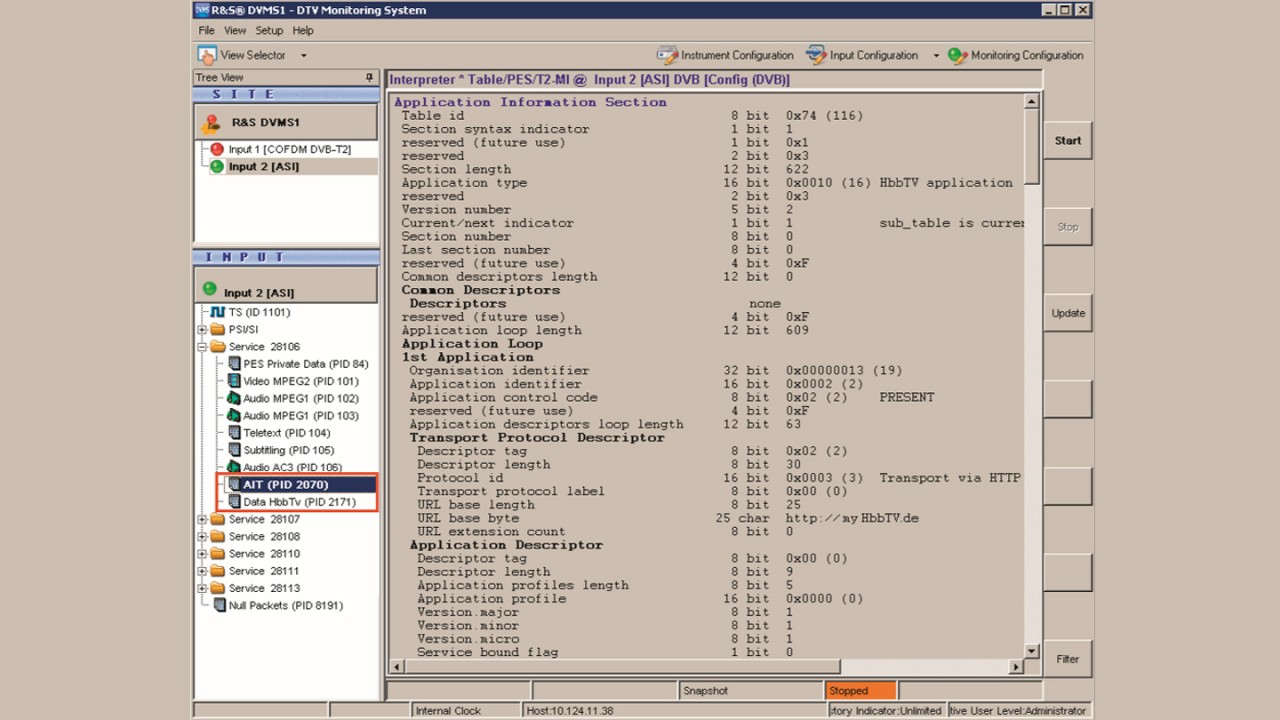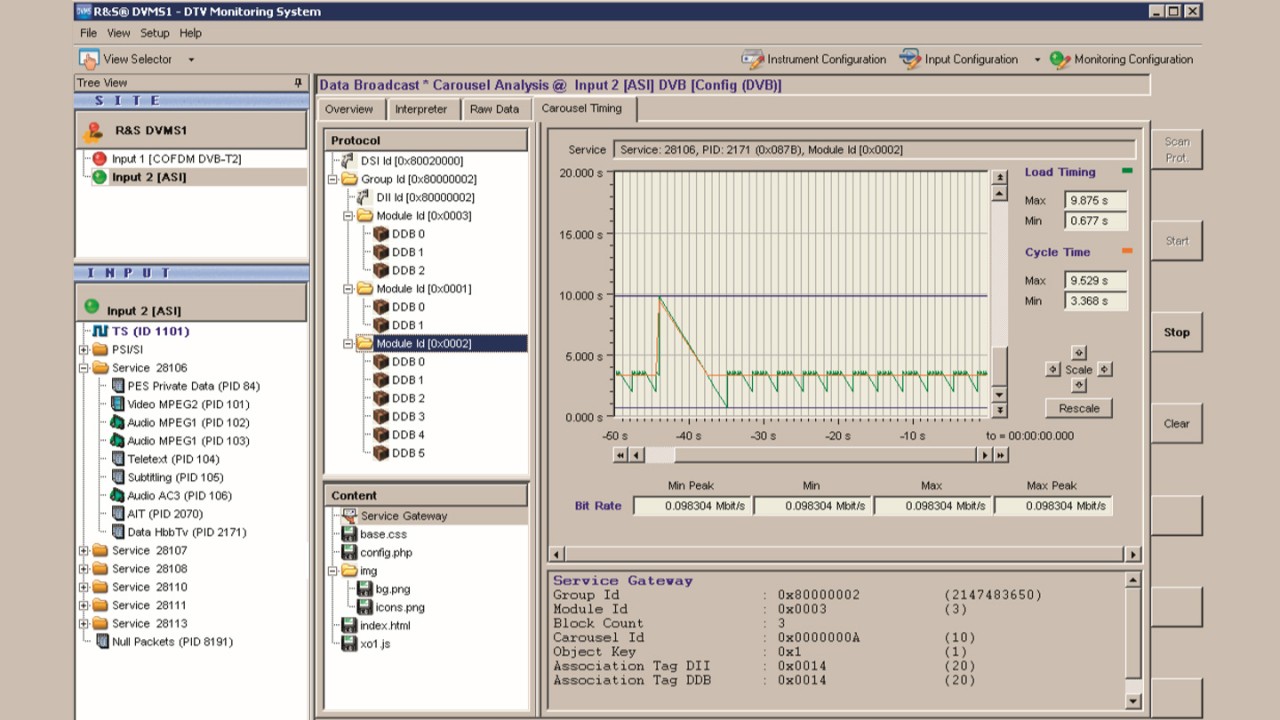Hybrid Broadcast Broadband Television (HbbTV)
Signaling checks, DSMCC object carousel analysis and fault localization all in one instrument: R&S®DVMS, R&S®DVM or R&S®ETL

Signaling checks, DSMCC object carousel analysis and fault localization all in one instrument: R&S®DVMS, R&S®DVM or R&S®ETL
HbbTV combines broadcast and broadband Internet for TV. With a suitable set-top box, the HbbTV data transmitted in the broadcast signal can be used to offer programdependent applications (e.g. information retrieval at the press of a button) and interactive TV (e.g. for audience voting).
New test methods are required to analyze HbbTV. It is important to check, for example, that the broadcast signal correctly inserts data and to check this signaling in the various MPEG-2 transport stream (TS) tables.
For each TV program with an HbbTV application, the payload and the application information table (AIT) have to be transmitted, and signaling has to take place in the program map table (PMT). If these components are missing or if signaling is wrong, the application may behave incorrectly or fail.
The application payload is transmitted via the Internet, which also serves as a return channel, or via the broadcast signal using the DSMCC* object carousel. Data is transmitted serially and repeatedly. The resulting load time at the receiver is analyzed to assess if the data is inserted correctly and if the number of packets used ensures a sufficient transfer rate.
* DSMCC: digital storage media control and command.


Rohde & Schwarz offers various solutions for analyzing HbbTV signals, with new options for the R&S®DVMS and R&S®DVM families of proven digital TV monitoring systems, and the high-end R&S®ETL test receiver.
The transport stream tree indicates if the program contains an HbbTV application and whether the required payload and AIT are available. The interpreter functions display the parameters of the various tables. The AIT view, for example, shows the URL base, visibility and the application name.
Rohde & Schwarz offers various solutions for analyzing HbbTV signals, with new options for the R&S®DVMS and R&S®DVM families of proven digital TV monitoring systems, and the high-end R&S®ETL test receiver. The transport stream tree indicates if the program contains an HbbTV application and whether the required payload and AIT are available. The interpreter functions display the parameters of the various tables. The AIT view, for example, shows the URL base, visibility and the application name.


Analysis of the DSMCC object carousel timing using the R&S®DVMS1.